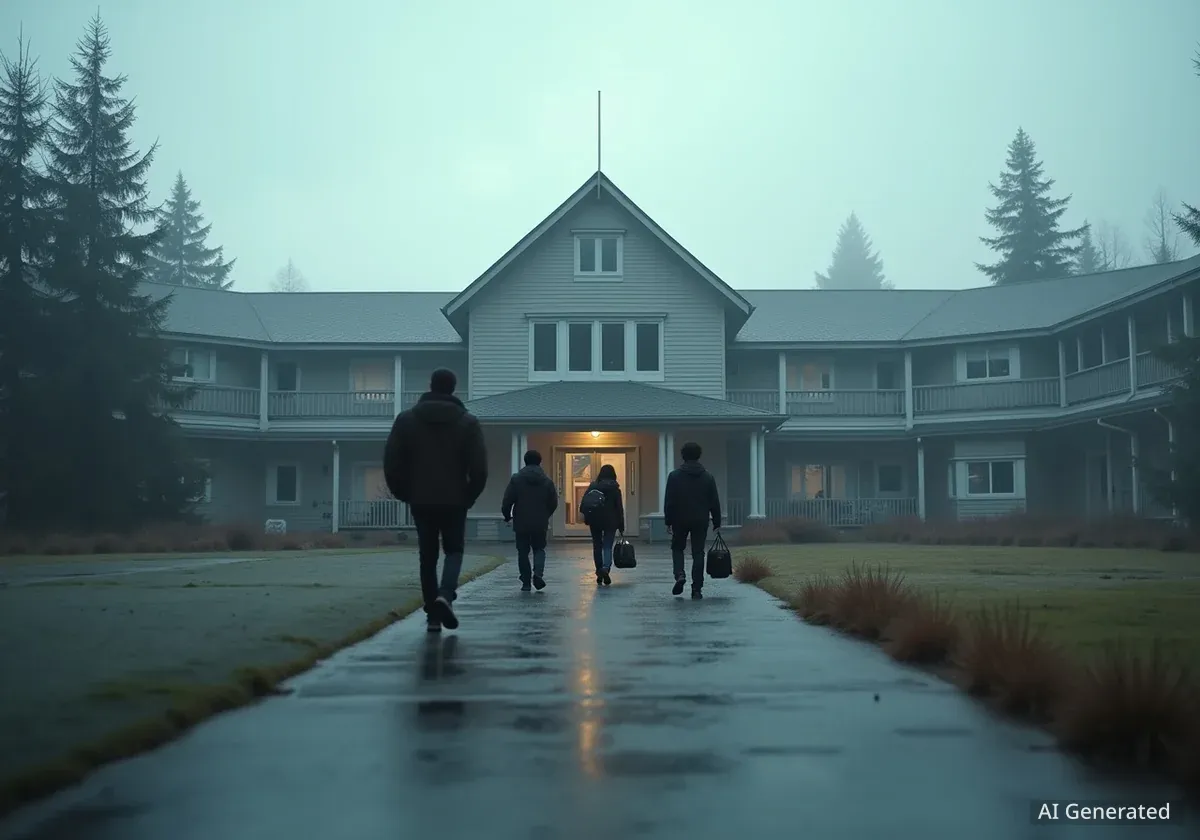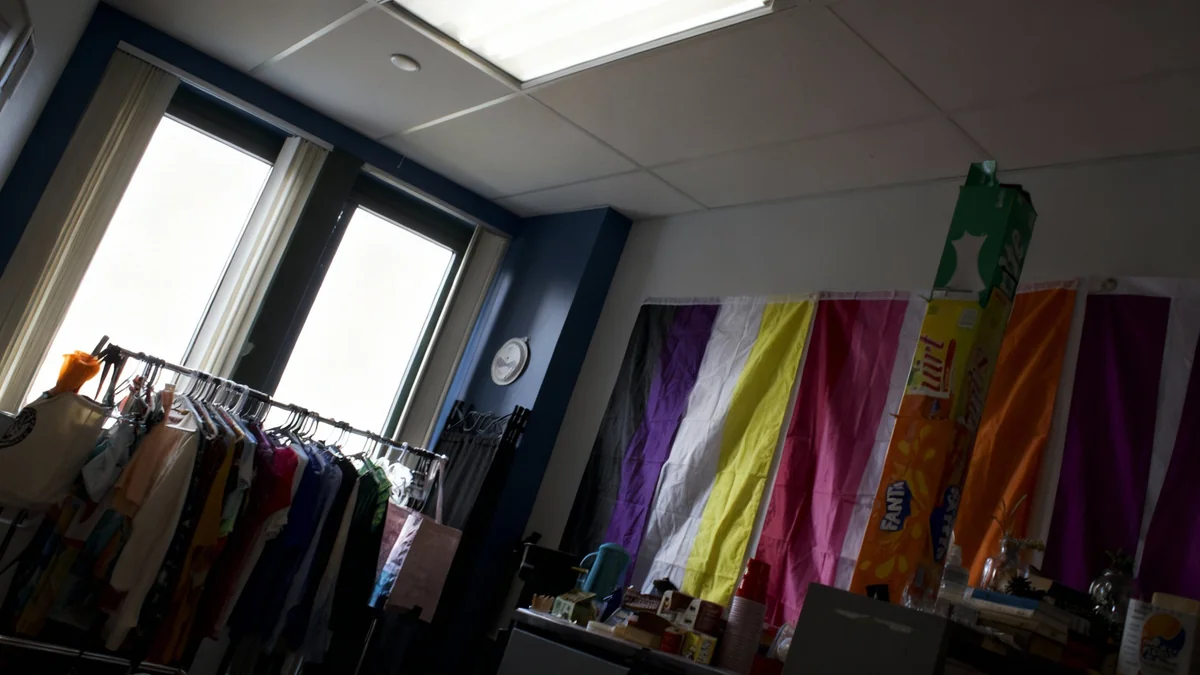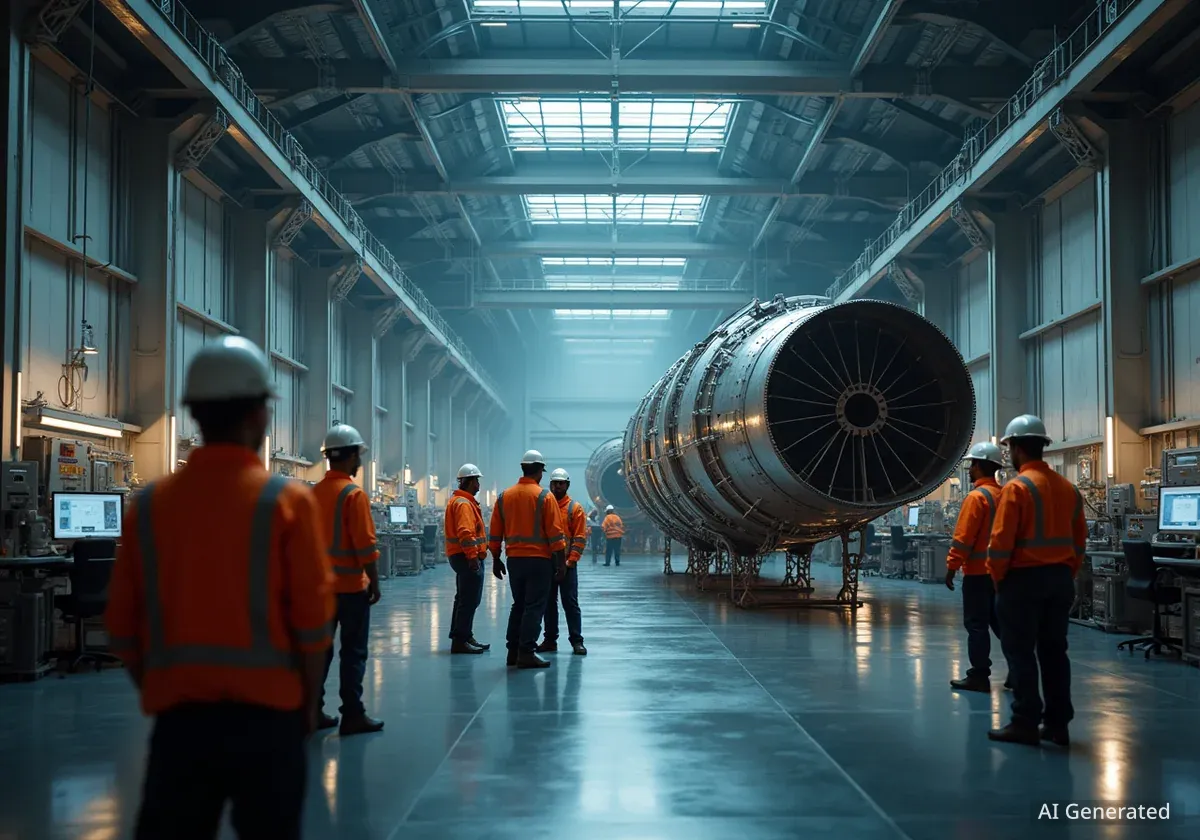The University of Delaware's Department of Civil, Construction and Environmental Engineering (CCEE) has officially opened a new 1,200-square-foot collaboration space for students. The facility, located on the second floor of DuPont Hall, was unveiled during a ribbon-cutting ceremony on September 26, marking the culmination of a decade-long initiative to provide a dedicated area for teamwork and community building.
Funded through the support of alumni and corporate partners, the space is designed to help students work on class projects, hold meetings, and study together. University officials state the new facility will better prepare engineering students for the collaborative nature of their future careers.
Key Takeaways
- The University of Delaware has opened a 1,200-square-foot collaboration space for its engineering students.
- Located in DuPont Hall, the facility is the result of a ten-year effort by the CCEE department.
- The project was funded by generous donors, including alumni and industry partners.
- The space aims to enhance teamwork, build community, and prepare students for collaborative professional environments.
A Dedicated Space for Future Engineers
For years, engineering students at the University of Delaware utilized hallways and unoccupied classrooms for group projects and study sessions. The CCEE department recognized the need for a permanent, dedicated space to foster the teamwork essential in modern engineering fields. This long-standing need was finally met with the opening of the CCEE Collaboration Space.
The project involved renovating a significant portion of DuPont Hall's second floor, transforming it into an open-plan room equipped for various student activities. The official opening ceremony featured remarks from key figures who championed the project.
"It is hard to overstate the value of the CCEE Collaboration Space to the students in the department—to facilitate team problem-solving, strengthen the sense of community, foster new partnerships, enhance communication and improve mental health," said Rachel Davidson, chair of the CCEE department.
Davidson, who is also the Donald C. Phillips Professor of Civil, Construction and Environmental Engineering, acknowledged the sustained effort behind the project. "We are thrilled that the new space is finally a reality after a decade of effort under three department chairs, Jack Puleo, Sue McNeil and Tripp Shenton," she added.
Enhancing the Student Experience
The new facility is expected to have a direct impact on both academic and extracurricular life for engineering students. Student organizations, which previously struggled to find adequate meeting locations, now have a reliable home base.
Alex Reif, a junior honors civil engineering major and president of the university's student chapter of the American Society of Civil Engineers (ASCE), highlighted the previous challenges. "It’s been pretty difficult to find spaces for a lot of students," Reif explained. "The biggest room we could get fits 40 people, so we’re crammed in. We’ll definitely be able to make use of this new space."
Facility at a Glance
- Size: 1,200 square feet
- Location: Second floor, DuPont Hall
- Purpose: Group projects, study sessions, student organization meetings
- Development Time: 10 years of planning and advocacy
Reif anticipates his ASCE chapter will have about 60 members this year, a number that can now be comfortably accommodated. He expressed optimism about the new environment, stating, "I’m looking forward to a more collaborative environment and a room that lends itself to communication and problem solving in a way that really isn’t too common around the campus."
Alumni and Industry Fuel the Initiative
The realization of the collaboration space was made possible through financial contributions from alumni and corporate partners who recognized its strategic value. Their support was critical in moving the project from a long-term goal to a tangible asset for students.
An Alumnus Gives Back
Guy Marcozzi, a civil engineering alumnus, UD Board of Trustees member, and part of the College of Engineering Advisory Council, was a key donor. He recalled his own student days, remembering the difficulty of finding places to work with classmates. "He and his friends would squeeze into spaces in hallways or try to find an empty classroom and hope they wouldn’t be kicked out," the university noted.
"It just felt like the right thing to do," Marcozzi said. "My education helped me get to a point where I have some discretionary income and allows me to give back... The relationships with your classmates established here tend to resurface later and enrich your life and career."
Marcozzi emphasized the importance of such spaces in building lasting professional networks and friendships, which he considers an invaluable part of the university experience.
A Partnership for Workforce Development
Heavy civil contractor Allan Myers, Inc., another significant supporter, viewed the investment as a way to strengthen its partnership with the university and cultivate future talent. The company sponsors the Construction Engineers of America club and frequently engages with students through site tours and guest lectures.
Andrew Smith, general manager for asphalt at Allan Myers and a 2011 UD alumnus, explained the company's perspective. "The new space brings them together. It gives the students a place to interact like they would be in an office setting with the right technology, with the right tools."
Smith noted that interns from UD have been exceptional and that investing in their development is mutually beneficial. "The students that we’ve hired are exactly the talent pool that we need to continue to grow our organization," he stated.
Preparing for a Collaborative Profession
Speakers at the ribbon-cutting ceremony consistently highlighted the connection between the new space and the demands of the modern workforce. Engineering is an increasingly team-based discipline, and providing students with early opportunities to hone their collaborative skills is a primary goal.
The Modern Engineer
Today's engineering challenges, such as deteriorating infrastructure, clean energy development, and water access, require multidisciplinary teams. Professionals must be adept at communication, project management, and integrated problem-solving. Educational spaces that mimic these collaborative environments are considered vital for career preparation.
Pamela Norris, Dean of the College of Engineering, articulated this vision at the event. "Thanks to the vision of our faculty, the persistence of department leadership and the generosity of our alumni and donors, we now have a space designed for exactly what the world needs from engineers: collaboration," Norris said.
She elaborated on the broader benefits beyond academics. "Here, students will tackle projects side-by-side, lead organizations, mentor one another and prepare for careers in a workforce that depends on teamwork and innovation. Just as important, they will build friendships, strengthen resilience and create memories that last a lifetime."
The CCEE Collaboration Space is now open for all civil, construction, and environmental engineering students, providing a central hub for academic growth and community connection that is expected to serve the department for generations.





